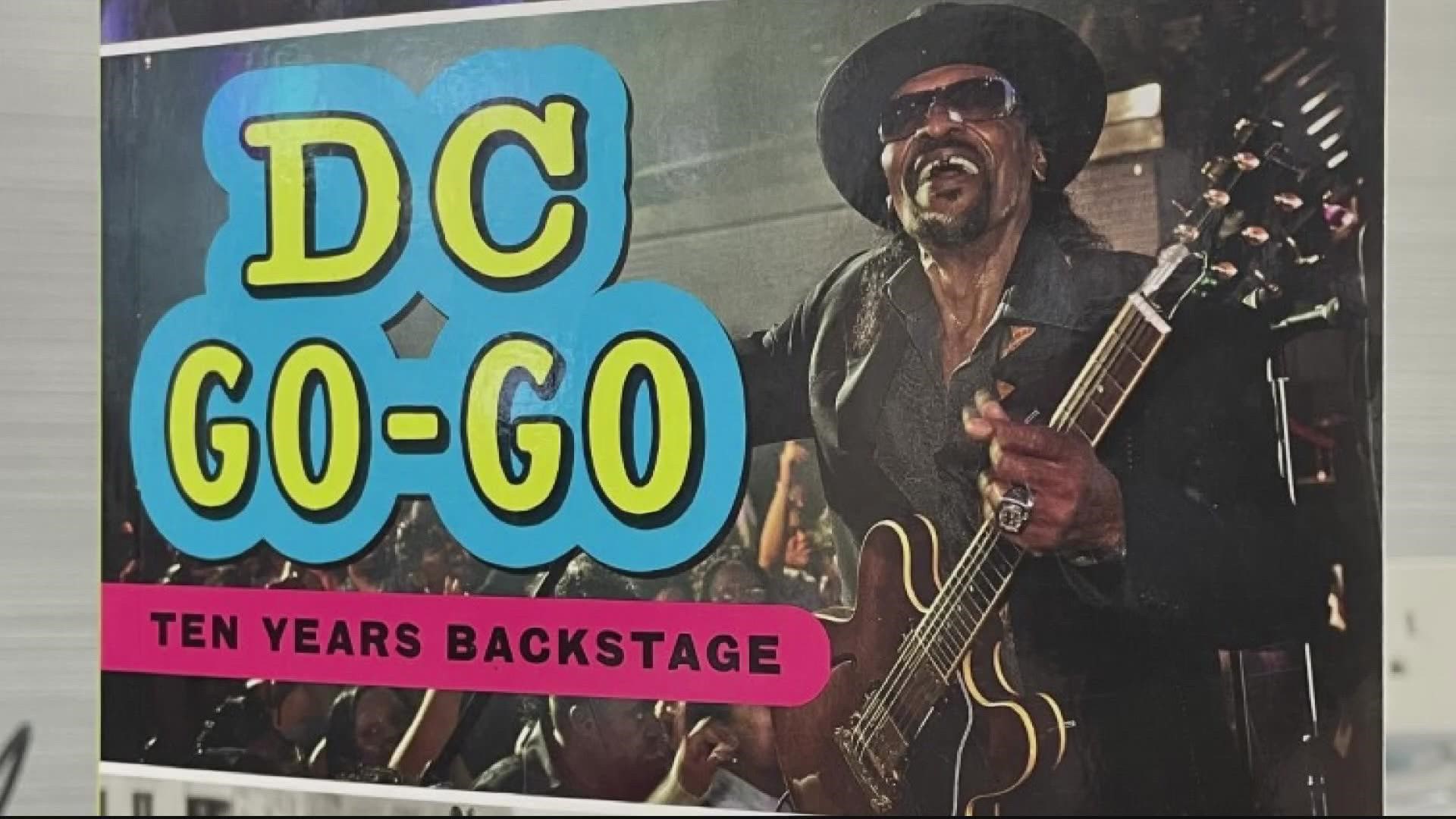WASHINGTON — Chuck Brown, the musical legend widely considered the godfather of D.C.'s Go-Go scene, had one member of his band who didn't play an instrument.
Photographer Chip Py recalls the scene before a show in Hampton, Virginia when a representative of the venue gave Py a lengthy introduction to the rules of capturing photos at the venue. Among them was a rule that no one but band members were allowed on stage.
This led Brown to inform the venue official that his photographer was part of the band and should be allowed to shoot pictures from wherever he wanted.
Brown and Py won that battle.
Chuck Brown included a photographer as part of his band, according to Py, because -- in what turned out to be the final months of his life -- Brown knew the photos would be a crucial living history.
"Chuck asked me after I was photographing him for a year to walk to the stage with him," said Chip Py. "On that walk to the stage, he had something to tell me. What he told me was that what I am doing for him is important to him, important to his family and important to his legacy."
Py recounted that story in the opening pages of his new book 'DC Go-Go, Ten Years Backstage' and shared more stories with me during a visit to the D.C. park that bears Chuck Brown's name in Northeast Washington.
When artists pass away, they leave their music behind to be shared with generations. Py's photos are an important part of that living history; a perpetual reminder of the importance of the DC Go-Go scene.
"Having my pictures archived in the D.C. Library for generations to come now meant that it's time to sit down and write the book," said Py.
The D.C. Library system has an extensive set of Go-Go archives and it has now cataloged more than 1,900 images taken by Py.
"Giving the legacy to people who might not know. Giving the legacy to people for the history beyond me and beyond you," said Py. "What I saw and what I captured in authentic Go-Go is now preserved for historians and people to see."
While Py's photos speak thousands of words in and of themselves, Py's book is both an olive branch to people who have never heard of the Go-Go music genre and it's also a tribute that captures its essence to the most die-hard fans and musicians.
"When I wrote this book, I took a lot of care to make sure the people who are in Go-Go are represented. There's a whole section of photos with fans," said Py.
Included in the book are the origins of Go-Go, Go-Go 101 and the culture surrounding Go-Go.
The stories that accompany the photos tell the essential story of Chuck Brown and how he wanted fans to experience his music.
For example, an iconic photo of Brown at D.C.'s 930 club pointing down from the stage was an attempt to get a venue official to remove the barricade separating the audience from the stage. Go-Go prefers no such barriers between its musicians and fans.
"The fans were reaching across me to reach Chuck," said Py. "And Chuck, seventy-five years of age, was kneeling down trying to reach them."
Go-Go has seen a resurgence in D.C. despite the fact many of the old venues where Brown and others used to perform have been closed. Py saw this as a perfect opportunity to write the book now.
"That was a result of the events of 'Don't Mute DC' in which Go-Go stood up for itself and said we are here we are part of the city's culture after so many years being pushed aside by the city and thought of something not worthy of any attention," said Py.
Py showed off some of his oversized limited edition print pictures from his time photographing Go-Go. One included Brown performing in the shadow of the U.S. Capitol building at a pro-D.C. Statehood event.
You can read more about Chip and his book HERE.
WATCH NEXT: The Netherlands Carillon in Arlington | Mic'd Up
The Netherlands Carillon was a gift from the Dutch people to show their appreciation for America's aid during and after WWII.

